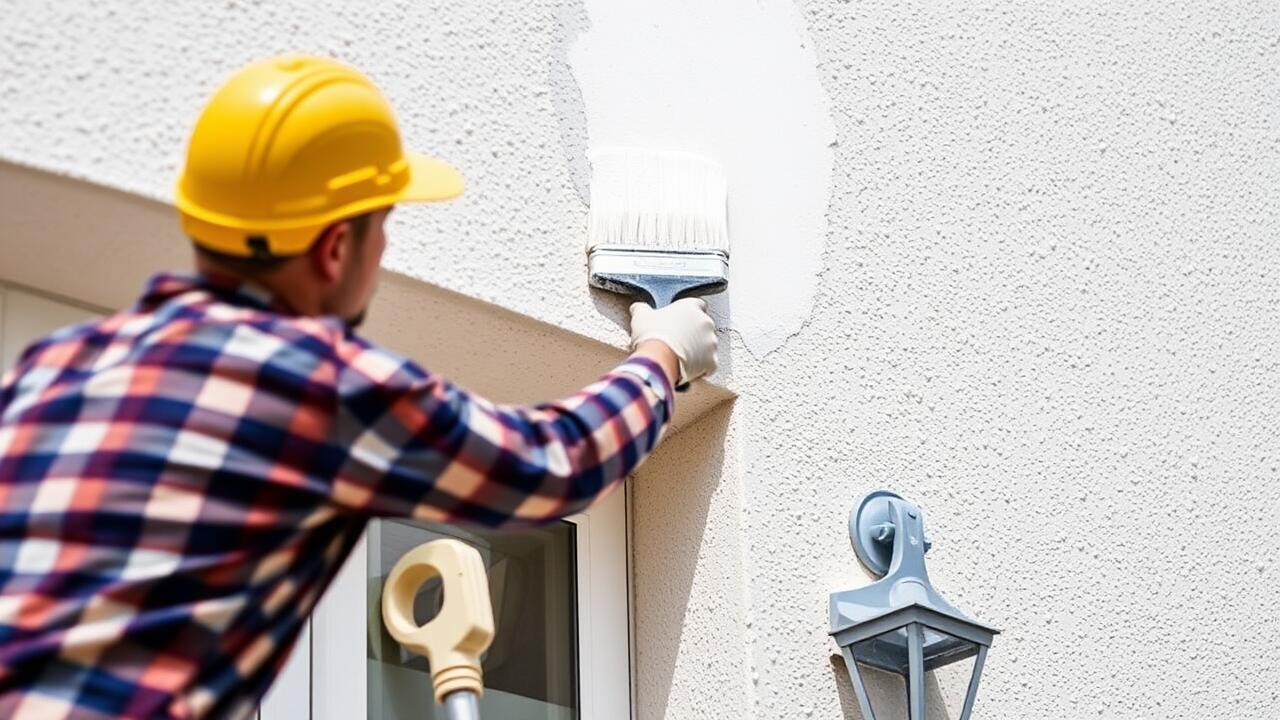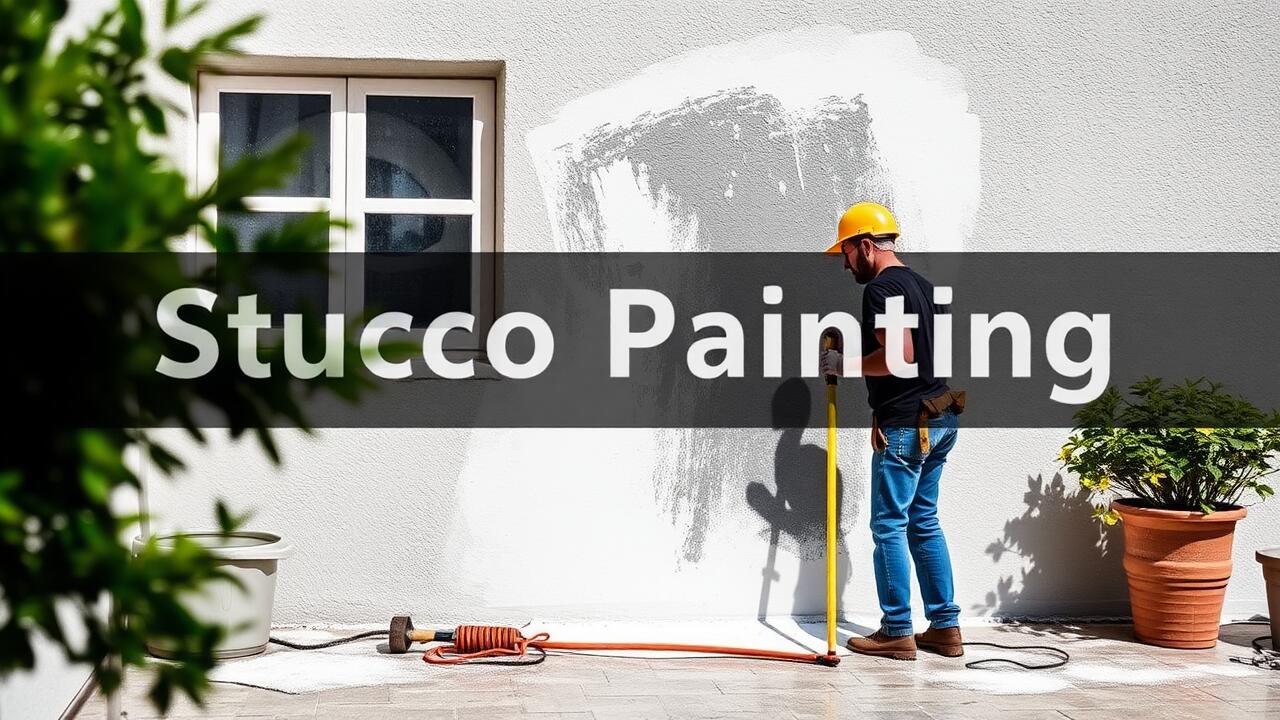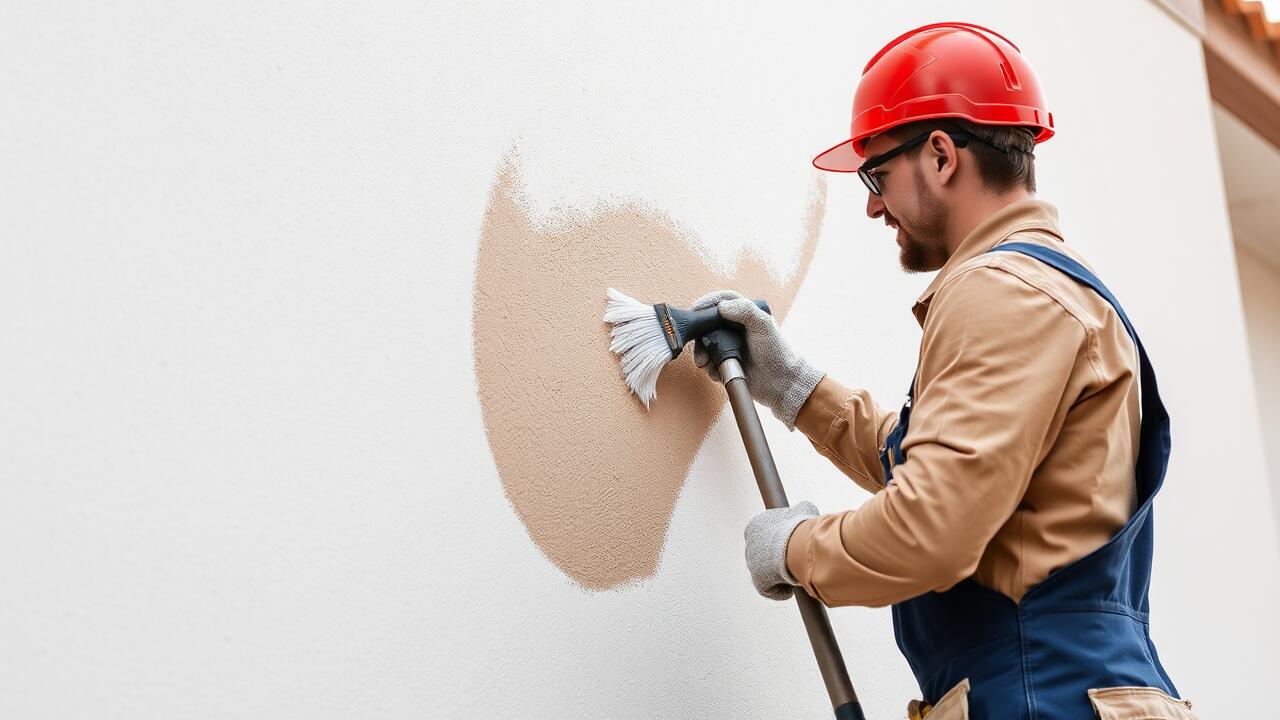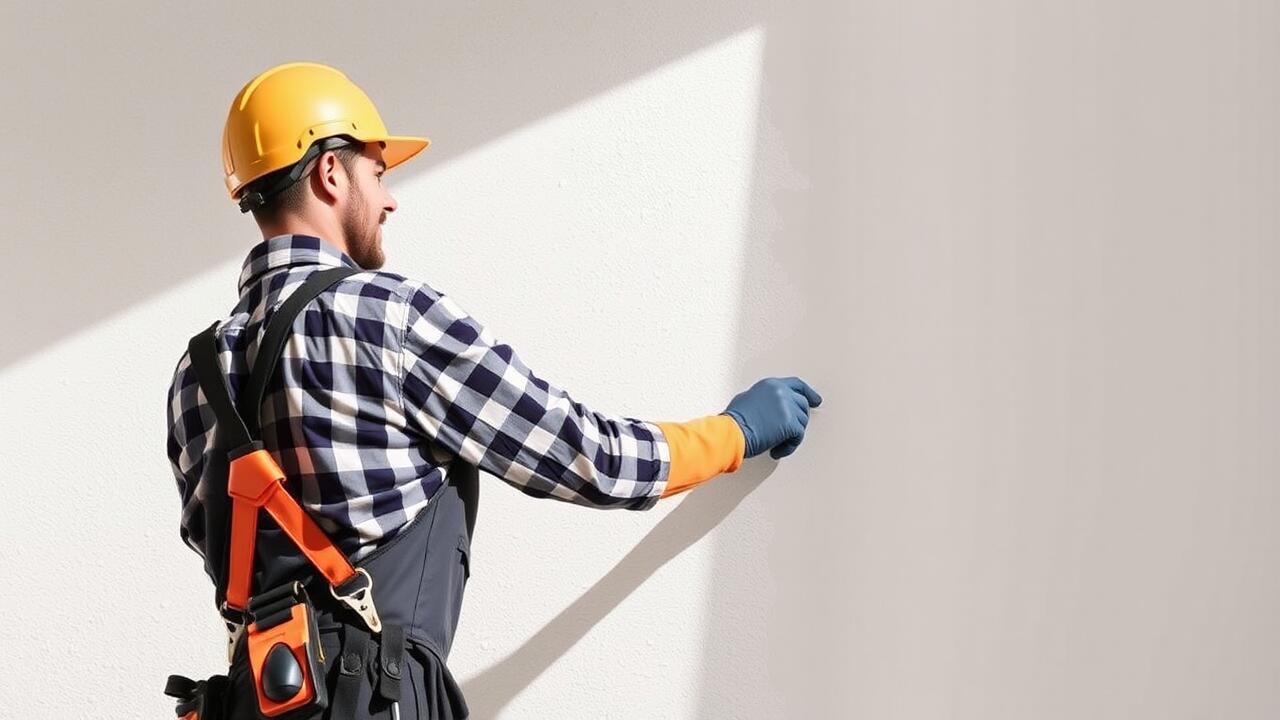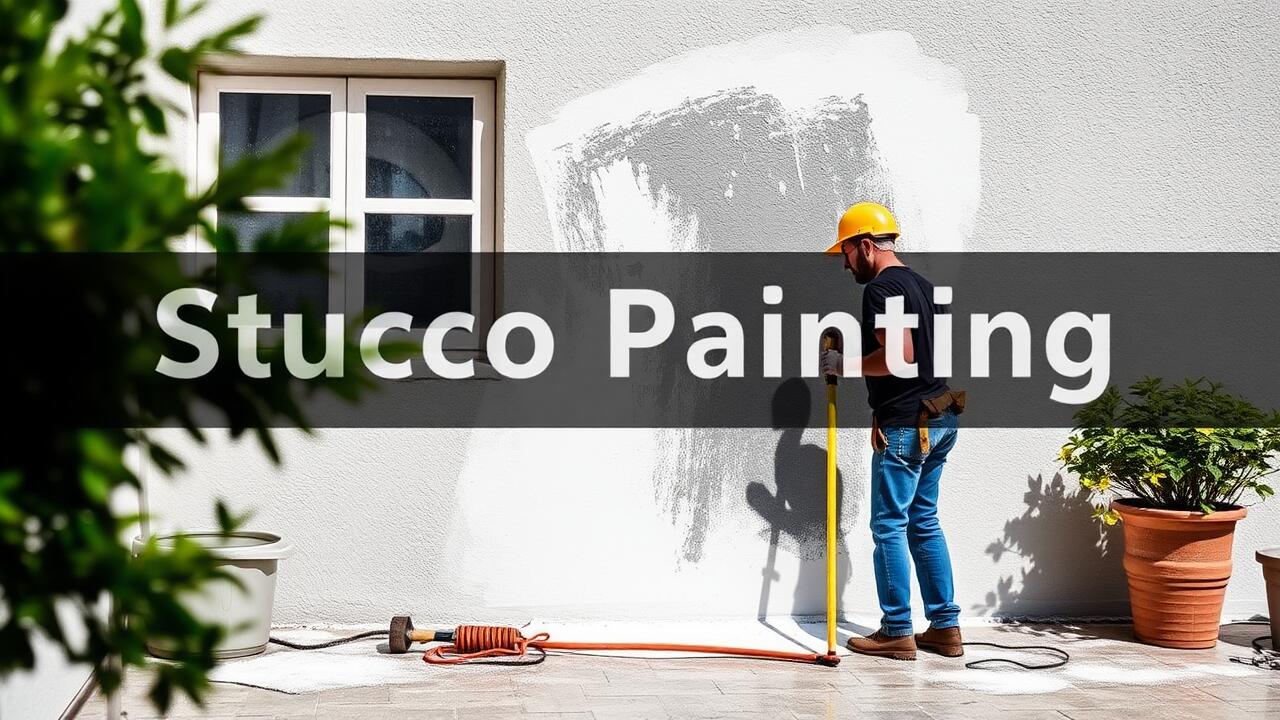
Tips for Achieving a Smooth Finish
Achieving a smooth finish on stucco requires careful preparation and attention to technique. Start by cleaning the surface thoroughly to remove any dirt, mildew, or old paint. Using a pressure washer effectively eliminates debris, ensuring better adhesion for the new paint. Follow up with a patching compound to fill any cracks or holes. Once the surface is clean and repaired, use a primer tailored for stucco to create a uniform base. This step is essential for the final coat to adhere properly and ensures an even finish.
When applying paint, opt for a high-quality sprayer or roller designed for textured surfaces. Using a sprayer can help achieve an even application, but if you prefer rollers, choose one with a thick nap to accommodate the stucco's texture. Employing techniques such as blending in overlapping strokes prevents visible lines or uneven layering. Investing in tools and materials like those from Westlake, Los Angeles Stucco Painting can significantly improve the final appearance, leading to a lasting and appealing result.
Techniques to Enhance the Final Look
To achieve a professional appearance when repainting stucco, consider using a spray gun for application. This technique allows for an even coat, reaching into the texture of the stucco more effectively than traditional brushes or rollers. It also minimizes the risk of drips and pulls while maintaining an efficient pace. With precise control, a spray gun can produce a smooth finish that highlights the unique characteristics of stucco, making it a popular choice for projects like Studio City, Los Angeles stucco painting.
In addition to the application method, choosing the right paint type plays a crucial role in the final outcome. Acrylic-based paints are often recommended due to their flexibility and durability, allowing them to adapt to the natural movement of the stucco. This choice can enhance the color's vibrancy and ensure resistance against fading and peeling over time. Proper preparation, combined with quality paint, can elevate your stucco surface and create an eye-catching look.
Managing Weather Conditions
Weather conditions play a crucial role in the success of a stucco repainting project. Rain, extreme heat, or high humidity can adversely affect both the application and adhesion of paint. For instance, if it rains shortly after painting, moisture can be trapped beneath the surface, leading to peeling and bubbling. Westlake, Los Angeles Stucco Painting professionals recommend checking the forecast before starting your project to avoid these pitfalls.
Temperature often influences the drying time and overall finish of the paint. Ideally, temperatures should remain between 50°F and 85°F to ensure optimal conditions for painting. Cold weather can cause the paint to thicken, making it difficult to apply smoothly, while high temperatures may cause it to dry too quickly. To achieve the best results, plan your work around mild weather, allowing the paint to cure properly and adhere to the stucco surface.
Ideal Weather for Repainting Stucco
When repainting stucco, the weather plays a crucial role in the outcome of your project. Ideally, you should choose a day when temperatures range between 50 and 85 degrees Fahrenheit. If it's too hot, the paint may dry too quickly, leading to cracks or an uneven finish. Conversely, painting during cooler temperatures or high humidity can result in longer drying times, trapping moisture and potentially causing issues down the line.
Another consideration involves rain. It's best to avoid painting when there is a chance of precipitation, as wet conditions can damage freshly applied paint. For residents looking to refresh their homes with a new coat, tapping into professional services like Westlake, Los Angeles Stucco Painting can ensure that weather conditions won’t interfere with the quality of the paint job. Planning your project around ideal weather conditions can significantly enhance the durability and appearance of your newly painted stucco.
Maintaining Your Stucco After Painting
Maintaining your stucco after painting is crucial for preserving its appearance and longevity. Regular inspections can help identify any cracks or signs of wear early on. Cleaning the surface periodically with a gentle scrub or hose can prevent dirt accumulation and mold growth. This simple routine can enhance both the aesthetics and durability of your paint job.
For homeowners in Westlake, Los Angeles, stucco painting often requires specific care due to the local climate. Applying a protective sealant can further safeguard the surface against moisture and UV damage. Avoiding harsh chemicals during cleaning can also uphold the integrity of the paint while ensuring that the texture remains intact. These maintenance practices will contribute to a more vibrant and long-lasting finish.
Best Practices for Long-Lasting Results
Regular maintenance plays a crucial role in ensuring the longevity of your stucco's newly painted surface. Inspect the finished paint job periodically for any signs of wear or damage. Promptly addressing issues such as cracks or peeling can help prevent larger problems that may arise over time. Keeping the stucco surface clean also aids in maintaining its appearance; a simple wash using a garden hose can remove dirt and grime without damaging the paint.
Additionally, consider using high-quality paint and primer specifically formulated for stucco. These products offer better adhesion and protection against the elements. Incorporating professional services, like those provided by Westlake, Los Angeles Stucco Painting, can also enhance the outcome. Their expertise ensures that the right materials and techniques are utilized for optimal results. By following these best practices, you can enjoy a refreshed, resilient stucco finish that stands the test of time.
FAQS
Is it hard to repaint stucco?
Repainting stucco can be a bit challenging due to its textured surface, but with the right preparation, tools, and techniques, it can be manageable for most homeowners.
What tools do I need to repaint stucco?
You will need tools such as a pressure washer, paint sprayer or roller, brushes, drop cloths, and quality exterior paint specifically designed for stucco surfaces.
How can I ensure a smooth finish when repainting stucco?
To achieve a smooth finish, make sure to clean the stucco surface thoroughly, use a primer if necessary, and apply the paint evenly, preferably with a sprayer for better coverage.
What weather conditions are best for repainting stucco?
Ideal weather conditions for repainting stucco are cool, dry days with temperatures between 50°F and 85°F. Avoid painting in direct sunlight or when rain is expected.
How can I maintain my stucco after repainting?
To maintain your stucco, regularly clean it to remove dirt and debris, check for cracks or damage, and consider a fresh coat of paint every few years to keep it looking its best.
